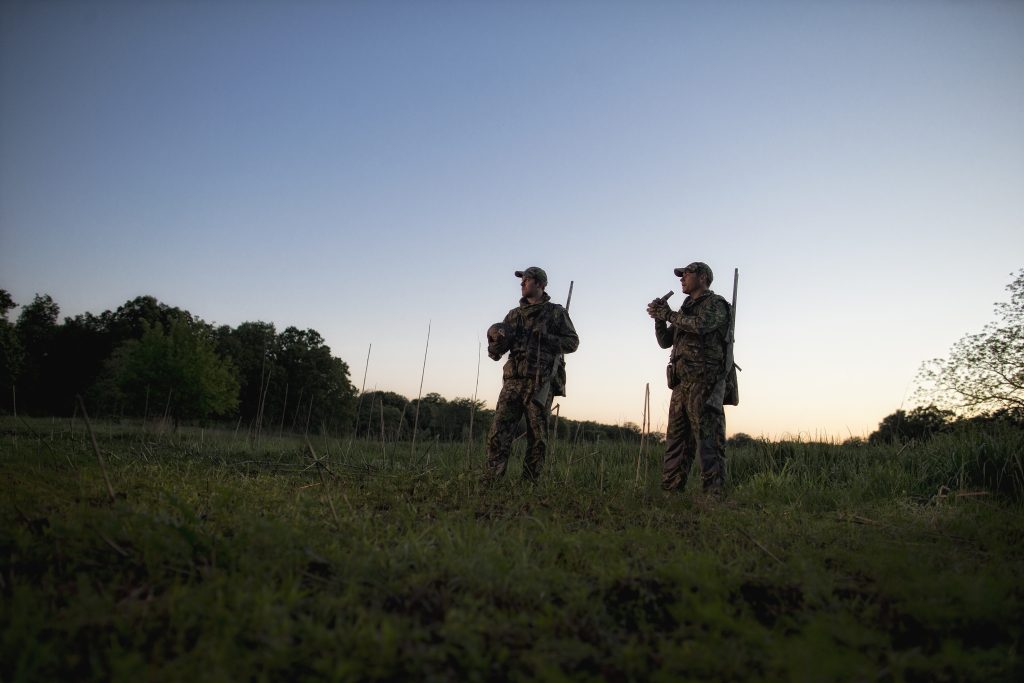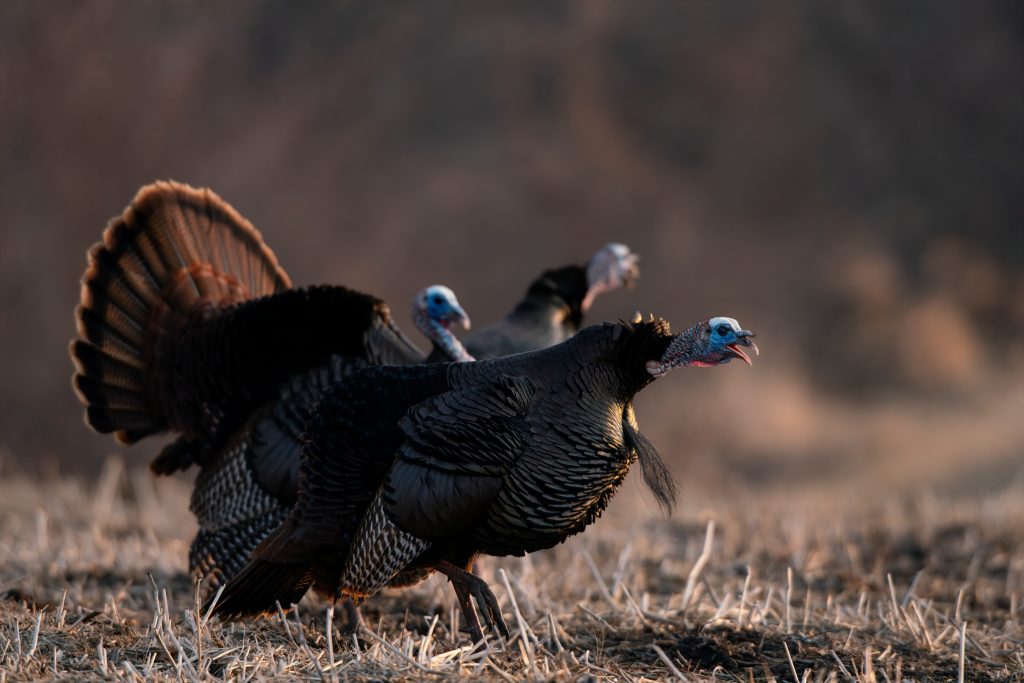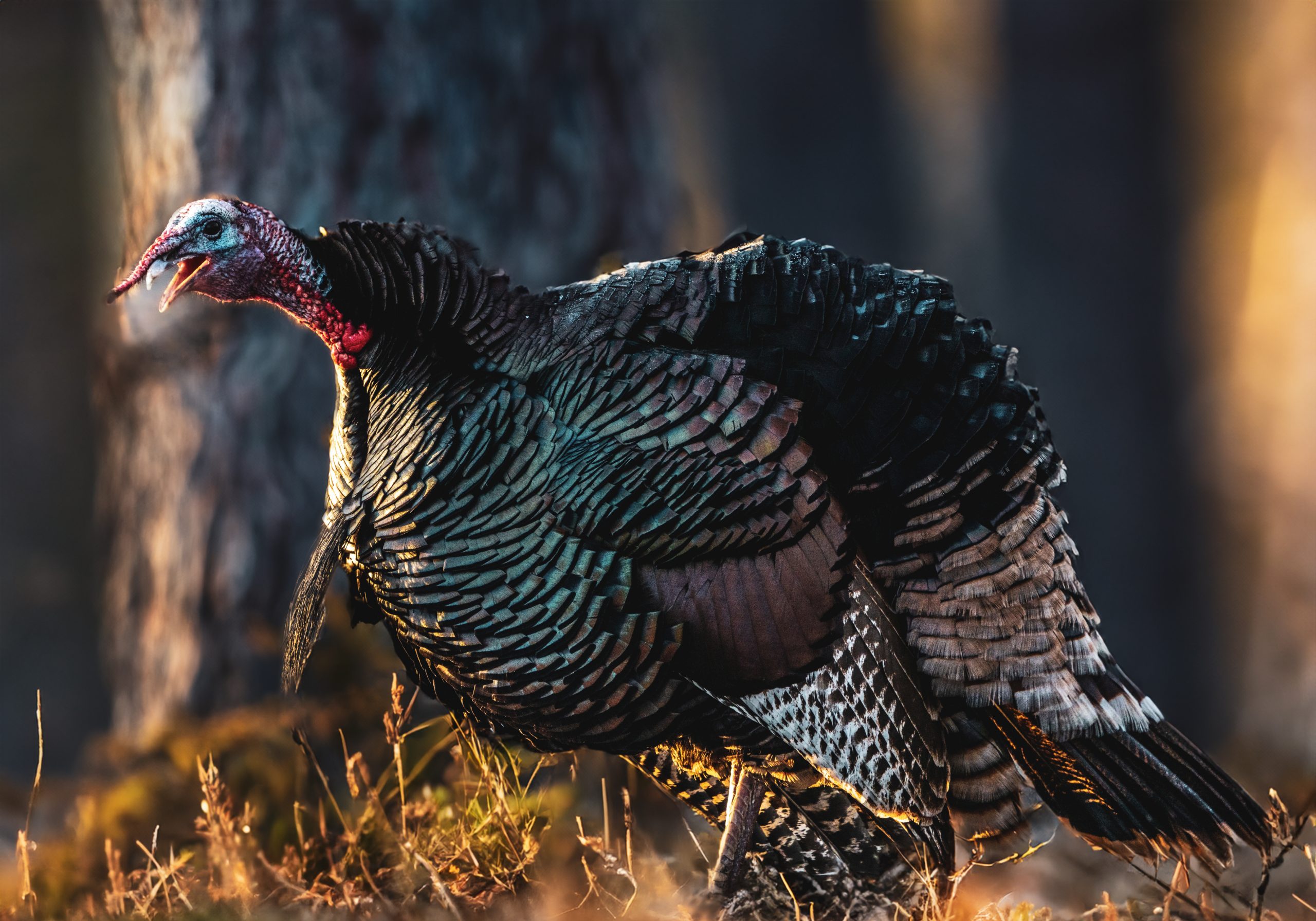Locator Calls: How To Make Turkeys Gobble
We have all had those days where it just seems like the toms we roosted the night before just disappear as the sun comes up. The excitement you had from roosting them the evening before builds as you sit against an old oak tree in the dark listing to tom’s gobble back in forth, then it stops as soon as the sun comes up.
Now what? Do you sit in wait for the toms to appear from any direction? Sure, that could work if they are close by, but I like to use a locator call in these types of situations. Locator calls are nothing more than a loud sound that forces a tom to shock gobble. We believe the frequency and pitch of certain sounds causes turkeys to gobble. I have heard them gobble at several different sounds from sirens to thunder; any sudden loud noise usually will bring a gobble out of a tom. As turkey hunters, we can use this to our advantage by using loud calls found in nature to help us locate those toms that have somehow seemed to vanish, or when we are trying to locate birds to hunt. Let’s cover some of the best calls you can use and when and how to use them.
There are several different types of locator calls made just for locating turkeys, like crow calls, owl calls and even hen calls. I have used all three different types and had success locating turkeys, but I have found each call is best used in certain situations.

Owl Call
I like to use an owl locator call first thing in the morning or as the sun is setting. I do this because, naturally, this is when you are most likely to hear an owl hooting. When using an owl locator call, I blow the sound “who works for you, who works for you all” then I roll my tongue at the end. This is the best way I have found to mimic the natural sound of an owl. This is one of my favorite locator calls, especially before the sun comes up.

Crow Call
I like to use crow calls in the middle of the afternoon. Because they are sudden and shrill sounding, they can be effective at drawing a shock gobble out of a tom. I like to use these when moving through the timber when it’s harder to see long distances. To use a crow call, it’s as simple as blowing the sound “call, call, call.” I will repeat these two or three times with 20 seconds between each call.
Coyote, Duck and Goose Calls
Some other not-so-common calls that you can use to locate toms are coyote calls, duck calls and goose calls. If you want to see how great a coyote call can be, just watch a few episodes of the Hunting Public. Those guys have perfected that call. When I first heard waterfowl calls can work as well, I had a hard time believing it. That was until I was on a turkey hunt close to a pond. There were several geese around the pond making all kinds of noise. I had been sitting there for a few hours with no sign of any toms. Just as I was getting ready to pack up a goose let out a few honks, and a tom working his way across the field toward my decoys gobbled. As the season gets closer to an end and turkeys have been called at by every hunter in the area, they tend to get calls shy. This is the time I have found these non-conventional calls, like the goose, call really shine. Peacock calls are another odd-ball option.
Hen Call
Using a turkey call to produce a hen yelp isn’t truly a locator call like the ones mentioned previously, but it can help you locate a gobbler. Just remember, when you make the sound of a hen in the spring, a tom turkey will come looking for it in most cases. Be ready. I only like to use a hen turkey call when I think a tom is close and I am in position to shoot if he is in range. If a tom goes quiet after gobbling early, using a mouth call/box call/slate call to produce hen sounds is the best way to try to get an answer and find the tom’s position, but don’t overdo it. I let out a few sets of yelps and clucks when calling, and that usually does the trick. Once you see him, there is usually little need to call more.
